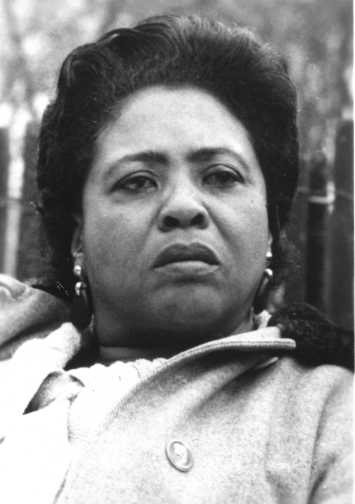#browncase
Explore tagged Tumblr posts
Photo

Discover unique phone cases in my @redbubble Art Shop!
Ft. Case & Skin for Samsung Galaxy Grid pattern on toffee
https://www.redbubble.com/i/samsung-case/PLAID-SERIES-Grid-squares-pattern-on-toffee-by-by-jwp/38746550.L6XAS?asc=u
#phonecase#iphonecase#casesamsung#samsung galaxy case#phoneaccessories#shop#sales#redbubble#redbubbleartist#prints#browncase#plaid case#giftideas
6 notes
·
View notes
Photo

Leather passport wallet. I’ll be adding these to my shop for a lower priced option. These are made from a pre-dyed leather (Laredo Crazy horse cowhide) Less work for me means more savings for you! Plus, they still look awesome and function just as well. . . . . . . . . . #leather #wallet #passportwallet #passport #travelwallet #deer #deerwallet #passportcover #passportcase #passportready #skinznhydez #nothingcreativeindustries #brown #brownwallet #browncase #browncover #journey #havepassportwilltravel #adventure #adventures #adventuretime #moon #darkart #darkartists #etsy #etsyshop #etsygift #giftidea #giftideas https://www.instagram.com/p/CgC324BPfgO/?igshid=NGJjMDIxMWI=
#leather#wallet#passportwallet#passport#travelwallet#deer#deerwallet#passportcover#passportcase#passportready#skinznhydez#nothingcreativeindustries#brown#brownwallet#browncase#browncover#journey#havepassportwilltravel#adventure#adventures#adventuretime#moon#darkart#darkartists#etsy#etsyshop#etsygift#giftidea#giftideas
0 notes
Link

#iphone#iphonecase#iphone8#iphone7#iphone6s#iphone6#iphone8case#iphone7case#iphone6scase#iphone6case#iphoneleathercase#iphonewalletcase#leathercase#walletcase#redcase#browncase#winecase#blackcase
0 notes
Photo

https://www.zazzle.com/vintage_alice_in_wonderland_flamingo_carved_samsung_galaxy_s8_case-256343692245043541 #aliceinwonderland #samsungcase #woodcase #aliceinwonderlandsamsungcase #aliceinwonderlandwoodcase #jujugarden #zazzlecase #browncase #samsungwoodcase
#samsungcase#samsungwoodcase#aliceinwonderland#browncase#zazzlecase#aliceinwonderlandwoodcase#aliceinwonderlandsamsungcase#jujugarden#woodcase
0 notes
Text
https://i.etsystatic.com/9843301/r/il/7e552c/3278541371/il_fullxfull.3278541371_2ayg.jpg
Thanks for the great review claudia ★★★★★! #etsy #brown #gold #browncase #leafyfloralpattern #cigarettecase #stratton #vintage #cigarettes #madeinengland https://etsy.me/3AnITiK
#etsy#etsysellersofinstagram#etsyfinds#etsyseller#etsyshop#etsyuk#etsylove#cigarettecase#etsystore#stratton
0 notes
Text
Civil Rights Movement in the 1960's: Roy Wilkins and Fannie Lou Hamer

Figure 1. Roy Wilkins

Figure 2. Fannie Lou Hamer
"By the middle of the 1960s, Hamer and other advocates of Black Power had denounced the moderation and compromises of Wilkins and the NAACP. Years later, however, Wilkins could declare that the NAACP "is still with us." What were the achievements and limitations of Hamer's and Wilkins's methods? Which leader do you think was more effective? Why?"
As discovered throughout the lectures and readings in HIST258, the disenfranchisement of black slaves and black Americans were a reoccurring theme in American history. Even though the Emancipation Proclamation in 1863 promised black freedom, defacto Jim Crow laws prevented black-Americans from exercising their constitutional rights. By the 1950’s black American grew tired of the blatant racial prejudice cushioned by enabling social and legal structures that allowed many racist white’s to get away with unspeakable brutalities. As a result, the Civil Rights movement in America erected several organizations aimed to fight the social and legal injustices in America and reclaim the dignity of African Americans. Alongside famous Martin Luther King Jr, two notable figures came to dominate the national stage for Civil Rights: Roy Wilkins (Figure 1) and Fannie Lou Hamer (Figure 2). Both black, and both experienced just how apparent the racial divide was in America. Wilkins came to be known as the execute secretary of the National Association for the Advancement of Coloured People (NAACP) and his top-down approach in fighting for Civil Rights. On the other hand, Hamer was known to be the field secretary of the SNCC and her grassroots or down-up approach. To say that one approach was better than the other would ignore the apparent causal action each approach had on one another. The success of the Civil Rights movement happened because both approaches worked hand-in hand to accomplish what they achieved.
To understand why both approaches are necessary, it is important to explore reasons as to why a sole top-down approach or grassroots approach would lead to failure. In simple terms, each of these approaches targeted one sector of the society and struggle to foster acceptance from all sectors of the nation.
Wilkins, who focused on mobilizing against Jim Crow through the courthouse and government pressure. His work was incredibly successful in creating massive legal changes to foster the acceptance of African Americans as a functioning member of American society. However, much like the Emancipation Proclamation in 1863, the NAACP’s first legal case of Briggs v. Elliot failed to increase funding in segregated black schools. In 1950, taxpayers spent $179 dollars to educate each white student while only $43 dollars went to each Black student. They also argued that segregation of schools caused psychological damage to the psyche of Black children that directly impacted their self-image. Despite the court ruling in favour of the NAACP, school segregation remained unchanged. Additionally, the famous Brown v Board of Education in 1952 represented by Thurgood Marshall, the unanimous 9-0 vote that racial segregation violated the Equal Protection Clause in the 14thamendment only change the du jure laws. In 1968, fourteen years after the Browncase, 80 percent of southern school-age Black folks continued to remain in schools that were 90-100 percent non-white. The ruling was entirely bogus in changing anything in American society and only appear on paper when de facto laws continued to actively resist integration. In reality, “Brown’s significance perhaps lies less in the immediate tangible changes – which were slow, partial and inseparable from a much longer chain of events – than in the idealism it expressed.” The Brown case only expressed what the Civil Rights movement wanted but did nothing to actually make it happen. They needed something to make social changes, not just legal ones.
To say that Hamer’s strategy was best would be incorrect. Although her methods of direct action (which typically involved defiance) did see immediate effect, it was always dangerous and required the legal backings to show the immorality of Jim Crow. One of Hamer’s first act of defiance was her attendance in the Civil Rights Workshop in 19963 with 6 other participants. Sunflower County was a"notorious stronghold of white supremacy."(Contending 214) Most blacks toiled on farms bound by the terms for sharecroppers. Illiterate and essentially slaves to landowners. Because of this, many landowners were strongly against the idea of literacy among Blacks as well as black suffrage simply because they would lose a valuable source of cheap labour. As a result, Hamer was arrested in Winona Mississippi for going into whites only section of the bus terminal. She was then sent to jail where she was beaten by 2 other black inmates who were threatened by the white guards. Her actions made no changes to the suffrage of black folks or the integration of public sectors. It was clear by the end of 1963 that the SNCC’s contributions did not make any major changes. Hamer needed a solid legal backing in order for her protests to make any significant changes to America.
The top-down approach and grassroots approach was useless unless they worked in unison. Both Hamer and Wilkins needed for each other was best represented in 1964. Brown’s case set the legal stage for Hamer to act. As a representation of what they wanted and a law that declared that segregation was unconstitutional, all they needed to do what show America what they meant. Hamer played a major role in representing the ideas presented by the Brown vs. Board of Education case. During the summer of 1964, the SNCC launched the Mississippi Freedom Summer where 2 out of the 3 civil rights worker murders were white men. The results of the protest showed just how strong anti-black sentiments remained in America and a law stronger than, “all deliberate speed.” (Podcast 13 16:40) was required in order to make changes. In that same year, the Civil Rights Act of 1964 was created which outlawed Jim Crow, prohibited racial segregation in public sectors and outlawed racial segregation/discrimination in employment. Without Wilkin’s legal work prior to her protest, Hamer could not have possibly represented just how racially charged Mississippi was. The success of the Civil Rights Act was attributed to both Wilkin’s method of top-down and Hamer’s approach of bottom-up.
In summary, the Civil Right’s movement needed both strategies proposed by Wilkin and Hamer to be successful. As seen in their co-operation being the only thing that made monumental changes, it is clear to see that neither strategy by themselves would have been successful.
Works Cited Holtz, John. 2017. “Contending Voices, Volume II: Since 1865, Fourth Edition.” Cengage Learning. University, Stanford. 2021. The American Yawp. Accessed September 9, 2021. amerianyawp.com.
1 note
·
View note
Link
Diesel DZ-7315 Mr. Daddy 2.0 WatchMovement=Swiss Quartz With Chronograph Dial=Gray DialBracelet / Strap=Leather / BrownCase=High Quality Stainless SteelCase Back=High Quality Stainless SteelCrown=With LogoGlass=Sapphire CrystalSize=Diameter (57mm) Thickness (15mm)Weight=145gmColor=Brown & GraySape=RoundWarranty=One Year Machine Warranty
What's Up # 0311 2320089








0 notes
Photo

20% OFF ALL PHONE CASES TODAY in my @Society6 Art shop >> click to shop!!!
Ft. Android phone case BEIGE SERIES Forsythia close-up monochrome
https://society6.com/product/beige-series-forsythia-close-up-monochrome_android-case?curator=byjwp
#phonecases#browncases#beigecases#floralcases#shop#sales#society6cases#neutralcases#bohocases#techaccessories
4 notes
·
View notes
Photo

new amp #pignose #amplifier #portable #portableamplifier #vintage #7100 #fuzz #rock #hardrock #rocknroll #guitar #browncase #leather #cranked
#guitar#pignose#portable#browncase#cranked#leather#vintage#rock#amplifier#rocknroll#7100#fuzz#portableamplifier#hardrock
0 notes